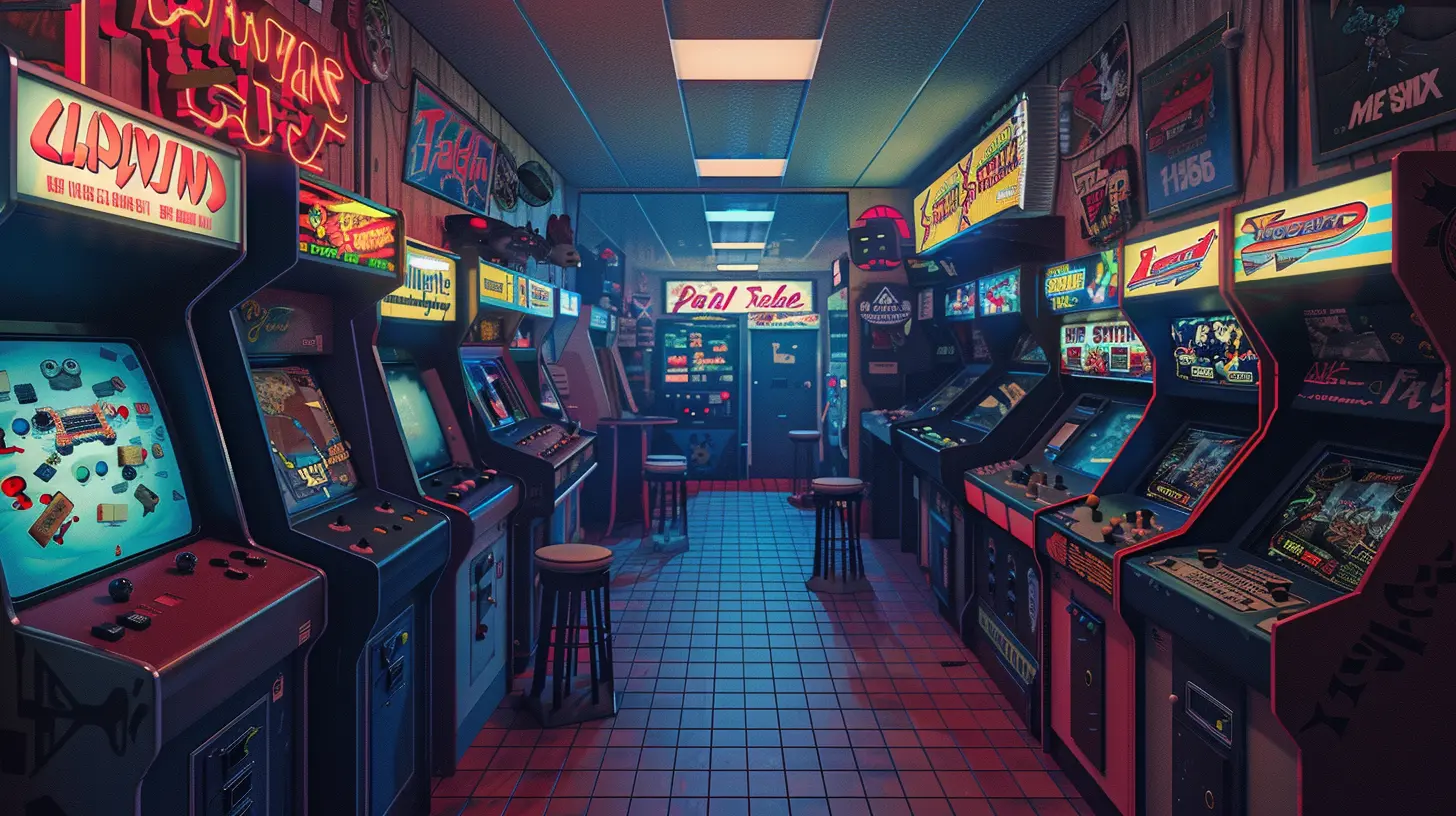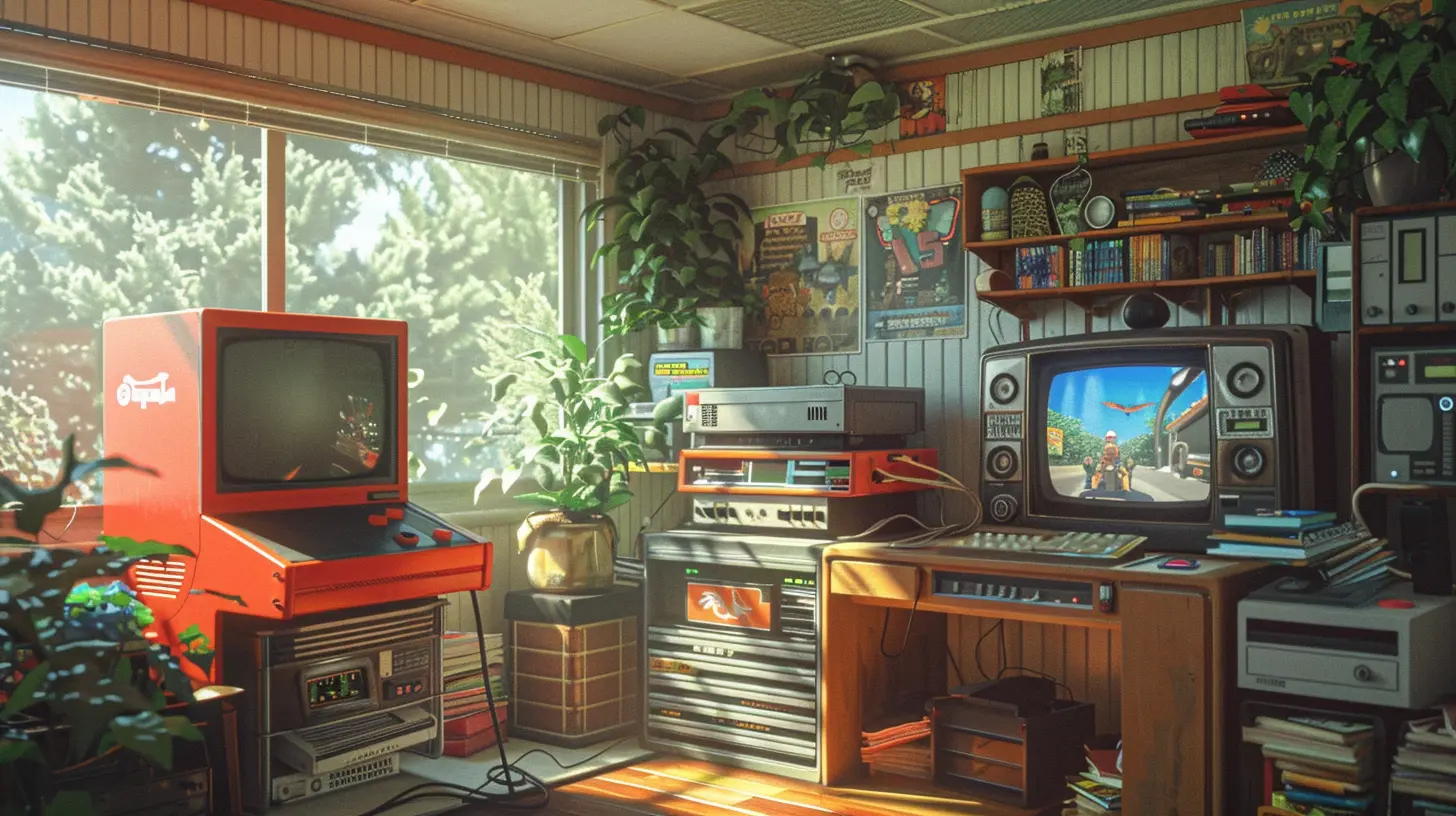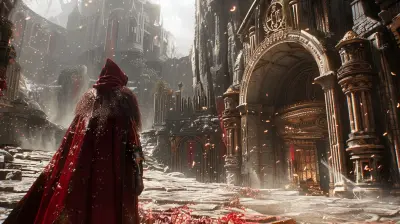When Graphics Didn’t Matter: The Power of Imagination in Retro Games
16 November 2025
Ah, the good ol’ days—pixelated sprites, chiptune music, and stories that grabbed your heart more tightly than the best Netflix binge. Before ray tracing, 4K textures, and life-like animations became the main dish of the gaming world, gamers thrived on something far more powerful than any graphics card could offer: imagination.
Sounds cheesy? Maybe. But let’s take a trip down memory lane and remember a time when video games weren’t just about what you could see—but what you could feel.
The 8-Bit Era: When Pixels Were Enough
Let’s rewind to the ‘80s and early ‘90s—when 8-bit consoles ruled our living rooms. From the NES to the Sega Master System, graphics were simple, blocky, and, let’s face it, kinda ugly by today’s standards.But did that stop us from believing that Mario was saving a princess from a dragon-turtle hybrid? Not at all.
Back then, each pixel was a window to a new world. Your brain filled in the blanks. Two red pixels and a blob? That was fire. A green blocky mess? Obviously a forest. We didn’t laugh at those graphics—we lived them.
Imagination Was the True Game Engine
You weren’t just playing a game—you were in the adventure. Your brain worked overtime filling in the gaps the console couldn’t handle. The blocky knight? You turned him into a valiant hero. The screechy music? Oh, that was your epic battle theme!In some ways, those games were like interactive coloring books. The outlines were there, but you brought the colors.
Storytelling Over Spectacle
Now, let’s get one thing straight: old games had stories. Not always sophisticated, but boy did they capture your heart.Think about The Legend of Zelda. The original game barely gave you more than “Hey, there’s danger. Take this sword.” And yet, it felt like you were the chosen one on a quest to save the world. You didn’t need cutscenes or hours of dialogue—you had courage, a map, and your imagination.
Text Boxes That Stirred Emotions
Who remembers RPGs like Final Fantasy or EarthBound? They didn’t need photo-realistic cutscenes to make you cry. Just a blinking cursor and a well-written text box. That was it.You read the lines, filled in facial expressions, imagined the tone of voice, and suddenly, the characters felt real. These games were emotional rollercoasters—delivered through text and your imagination.
The Joy of Limitations
Oddly enough, the limitations themselves were part of what made retro games so special.When developers couldn’t rely on flashy visuals, they had to get creative. They squeezed every drop of juice out of limited memory to deliver engaging gameplay, quirky characters, and unforgettable music.
Ever wonder why so many old soundtracks stick in your head? It’s because composers had only a few channels to work with—so they had to make every note count. Result? Absolute bangers.
Less Was More
Having limited tools often sparks the most brilliant creativity, right? It’s like trying to cook dinner with just a microwave and some seasoning—you get weird, but surprisingly tasty results.Game developers in the retro era did the same. With tight constraints, they focused on gameplay mechanics and emotional resonance. That’s why those games still hold up decades later.
Multiplayer Magic: Couch Co-op and Sleepovers
Before Wi-Fi and online servers, multiplayer meant one thing: sharing the couch.Whether it was tag-teaming in Contra or fighting over who got the better power-up in Bubble Bobble, these moments were gold.
You didn’t just play the game—you experienced it together. You’d argue over who got player one, elbow each other when someone died too early, and celebrate victories with high-fives and junk food.
No headset could replicate that kind of connection.
The Role of Player Imagination: Filling in the Gaps
Retro games expected something from you—they asked for your imagination.You didn’t just receive a finished, polished story; you participated in it. You theorized what that creepy boss really looked like beyond the 16-bit limits. You wrote fan fiction in your head. You invented entire backstories for minor NPCs.
Games as Interactive Books
In many ways, playing a retro game was a lot like reading a good novel. The visuals were suggestive, not definitive. The sound effects nudged your imagination rather than doing all the work.That kind of engagement made your connection to the game stronger. You weren’t just being entertained—you were building the world inside your head.
Why Retro Games Still Matter Today
Fast forward to 2024, and people still play retro games. Why?Because even with all the graphical horsepower at our fingertips, there's a certain magic in those old pixels you just can't replicate.
Modern games might blow your mind visually, but they rarely demand your imagination the way retro games did.
Nostalgia or Timeless Appeal?
Sure, part of the love is nostalgia. But it’s more than that.Retro games are timeless because they focus on fun. They’re bite-sized, often absurd, and packed with charm. They remind us that gaming doesn’t always need realism to feel real.
Even new indie developers are taking notes from the retro playbook. You see pixel art and chiptune music in games like Celeste and Undertale—modern gems that lean into imagination over graphics.
The Power of Blank Spaces
Sometimes, not saying or showing everything is the most powerful storytelling tool. That’s something modern games sometimes forget.In retro games, what wasn’t shown was just as important as what was. The monsters unseen, the parts of the map you couldn’t access, the vague quests—all of it fired up your curiosity and made the experience feel endless.
Leaving those blank spaces meant your mind could run wild. And that’s where the real adventure began.
What We Can Learn From the Pixel Pioneers
So what’s the takeaway here?Games don’t need to be drop-dead gorgeous to be meaningful. And more importantly, as gamers, we bring just as much to the table as the developers. Our imagination is half the equation.
Here’s what we can learn from those retro classics:
- 🎮 Focus on gameplay, not just graphics
- 🧠 Engage the player’s imagination
- 🧩 Use limitations to fuel creativity
- 🤝 Make room for co-op and community
- ❤️ Keep it simple, but emotionally rich
Retro Games Are More Alive Than Ever
Think retro games are a thing of the past? Think again.With the rise of classic mini consoles, ROMs, and services like Nintendo Switch Online, it’s easier than ever to play those old-school gems. And for many of us, introducing our kids to these classics is like passing down an heirloom.
We’re not just preserving games—we’re preserving a mindset. One that says imagination is the best console ever made.
Final Thoughts: Pixels Over Polygons?
Look, we’re not saying modern games are bad (far from it—we love a shiny open world as much as the next person). But sometimes, it's nice to go back to basics.Retro games remind us that graphics aren’t everything. They show us what games can be when we fill in the blanks and co-create the experience.
So the next time you boot up an old cartridge or load that pixel art platformer, remember: your imagination is the greatest expansion pack there ever was.
Game on, dreamers.
all images in this post were generated using AI tools
Category:
Gaming NostalgiaAuthor:

Tayla Warner

